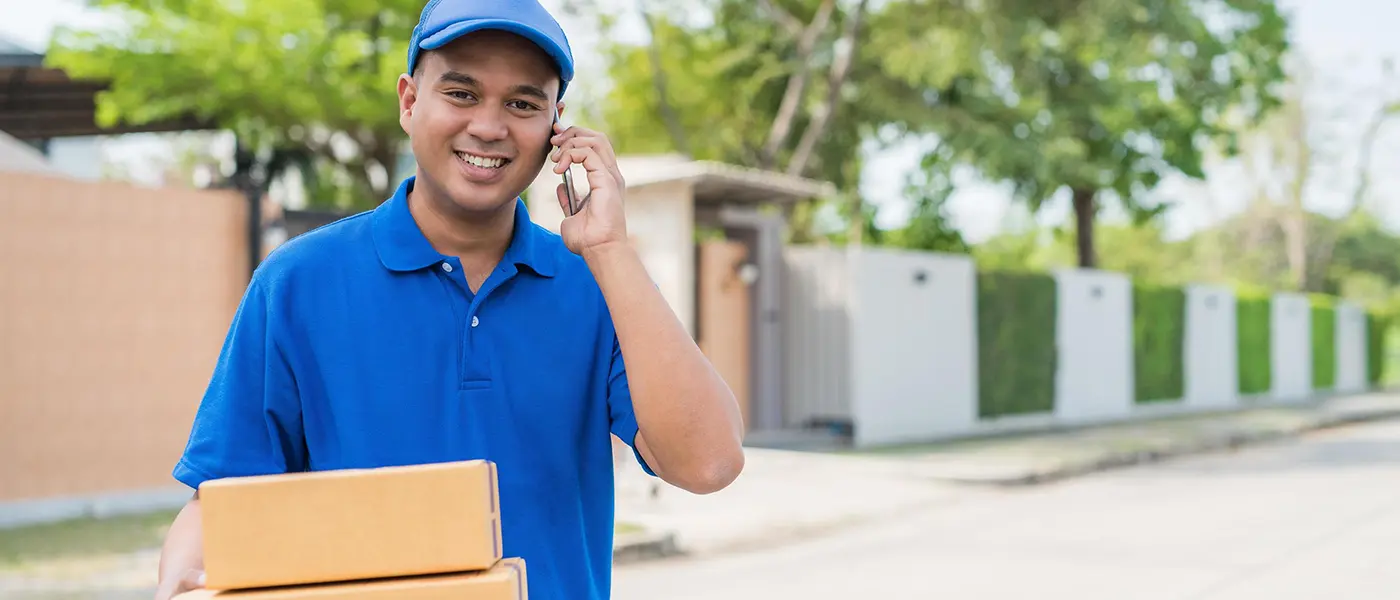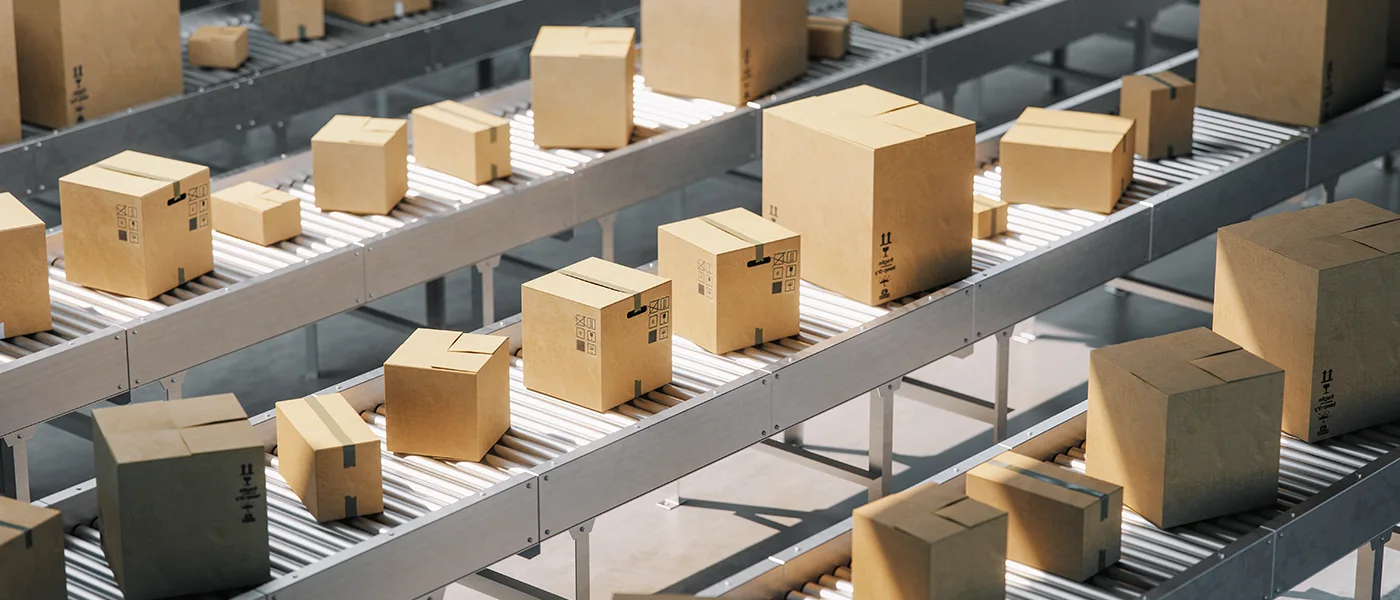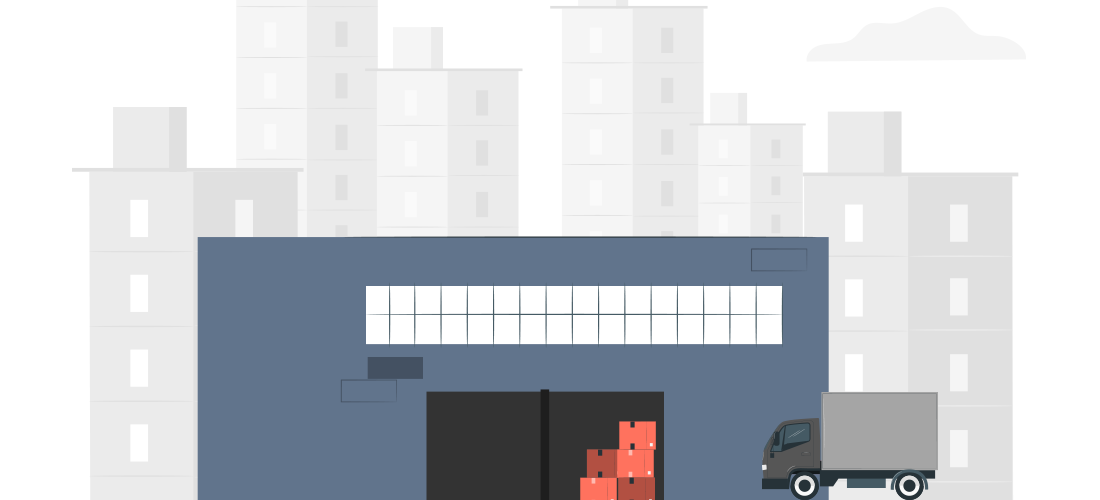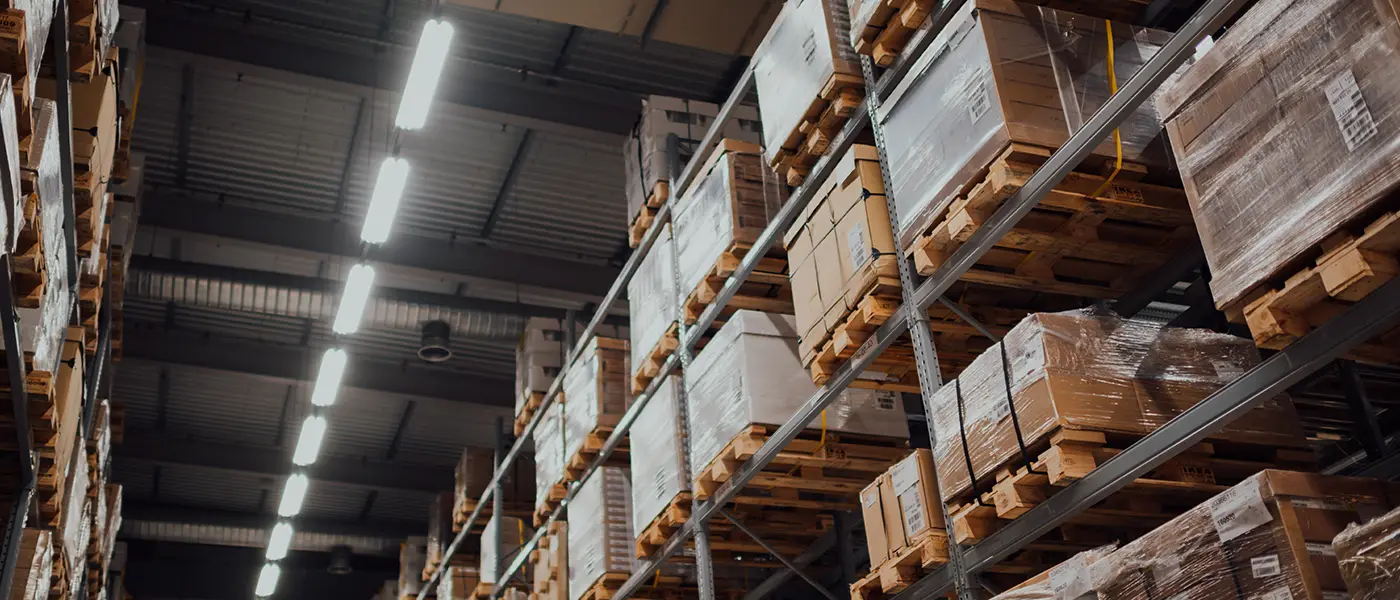In today’s logistics industry, speed and efficiency are crucial to keeping up with the growth of e-commerce companies. The supply chain involves various stages: planning, sourcing raw materials, production, delivery, and returns. The last-mile delivery is the last and most essential stage, as this stage is more complex than other stages. In this last delivery stage, the e-commerce company must deal with all the problems that come up to improve the customer experience.
Many giant e-commerce companies offer same-day delivery within one or two hours. You probably wonder how these companies achieve this speed for delivery operations. The secret lies in cutting-edge technology for last-mile delivery.
What Is Last-Mile Delivery, And Why Is It Essential?
Getting a package from the distribution hub to the customer’s front door is usually the last step in the delivery process. This phase is essential for the customer delivery experience as it is more expensive and challenging since the delivery fleet requires navigating city streets, which consumes more time and fuel. A good e-commerce company uses route optimization, fleet visibility, and real-time tracking to ensure that the final stage is less expensive, more efficient, and gives customers a better experience. The relative distance in a last-mile delivery operation can be anywhere from a single block to 100 miles. Many companies choose a distribution hub close to their end customers.
The shorter distance between the distribution center and the end customers means the delivery will be quick and inexpensive. Efficiency in last-mile delivery will enable companies to perform delivery operations at lower costs, benefiting both themselves and their customers. Although it’s technically the shortest distance in a product’s journey, it’s usually the most expensive, often accounting for 53% of the total cost of delivery.
What Are The Challenges Of Last-Mile Logistics?

The last delivery stage becomes more challenging as the world of logistics and e-commerce continues to change. Many factors, like where, how, and when deliveries depart and arrive, offer more flexibility to shippers, but they also contribute to the complexity of last-mile delivery.
Everyone wants the quickest delivery for their packages, and many giant companies are fulfilling this need. However, most e-commerce companies can’t deliver packages in shorter time frames like other big companies. Small companies have a low brand image in the market as they focus on a specific niche. Hence, small e-commerce companies fail to provide a variety of items.
They also have trouble finding and keeping good workers, which makes their work less efficient and slows down delivery. On the other hand, giant e-commerce companies offer a more extensive range of options and faster delivery options than small businesses. It causes great competition for all e-commerce companies.
A good e-commerce company also provides transparency for the last-mile delivery to the customer. Tracking the parcel at the last stage and notifying the customer is a big problem as the delivery fleet updates the parcel’s status by scanning its barcode, and often it isn’t easy to scan the barcode. Due to tight delivery schedules, fleets don’t always scan the barcode. It can cause tracking updates to be late or not happen at all. The company will need strong software to track where the delivery fleet is at all times. Getting the promised delivery date and time is a significant issue, as many factors can lead to delivery delays.
Poor address allocation and the unavailability of end customers are significant causes of failed or missed deliveries. A failed delivery is costly and will impact the customer experience. If the delivery fleet cannot deliver the package on the first attempt, it will take a week or more to make a second attempt, resulting in the company losing a customer.
If you want to keep all stakeholders, such as sellers, logistics partners, and consumers, happy, you must find practical methods to overcome all challenges. In the modern world, your e-commerce company needs to use technology to automate the delivery process.
What Is Last-Mile Technology?

It includes various products and solutions that optimize and simplify last-mile delivery. An e-commerce company uses last-mile technology like in-house order fulfillment, automated inventory distribution, and stock location to improve the delivery experience for both the delivery fleet and the customer.
Last-mile technology also includes a delivery management software platform that automates the supply chain of logistics. Using the right technology for your logistics company will help overcome many challenges, like shipping delays or missed deliveries, by coordinating with a logistic partner and streamlining delivery using SMS and email alerts.
Most shipping companies are now focusing on the latest last-mile technology, such as IoT, to track their last-mile delivery vehicles in real-time to get information about traffic conditions, performance, and route efficiency. Using IoT monitoring devices will allow companies to develop better ways to find the most efficient and fastest routes. It will help save a lot of time for future deliveries. IoT-equipped delivery vehicles will also help the company in many ways regarding technology. It will help companies by enabling them to achieve a consistent brand consumer experience with each delivery and purchase.
You can also use it for advanced logistics simulation, a program that uses models and algorithms to improve delivery operations as much as possible without stopping them. Once the company has a peak performance model, it can apply it to real-world delivery processes.
How Does Technology Help In Last-Mile Delivery Operations For Your Business?
Customers’ expectations for e-commerce companies are increasing day by day. Using only regular last-mile management software is not enough to meet those expectations. For last-mile delivery success, you will need the latest last-mile technology. You should utilize the robust last-mile management platform that helps your business grow by meeting customers’ ever-growing expectations, achieving operational efficiency, and reducing the cost of operations. Many last-mile management platforms let you do route planning, real-time tracking, task assignment, scheduling, and more. It also offers you carrier networks, optimized omnichannel distribution, gigafleets, and increased sustainability.
Many companies invest in these last-mile software solutions as it helps them improve route efficiency with the help of artificial intelligence and machine learning. AI and ML develop optimized dynamic routes by considering external factors such as weather, vehicle type, and traffic. It will also help companies to utilize the delivery fleet and drivers more efficiently. The platform allows managers to assign truck drivers and return pickup routes based on recipient addresses and locations. The devices help drivers monitor fuel consumption patterns and find more fuel-efficient ways for the job. It will speed up last-mile delivery as the drivers don’t have to stop to refuel their vehicles. It will also help drivers to reduce some expenses without compromising service quality.
The delivery scheduling feature of platforms offers efficiency to your business as it allows customers to choose the delivery method and time of their preference. The platform offers delivery windows that contain options for delivery such as overnight shipping, same-day shipping, and more to the customer. Making this process automatic allows you to save on the expense of manual work and speed up the process. The platforms can provide end customers with a pickup, a flexible time slot, drop-off points, and the power to choose special delivery instructions for the delivery fleet. It also allows end customers to notify the delivery fleet via SMS regarding changes in their delivery time. Using these features of platforms will reduce the chance of missed deliveries due to the unavailability of customers.
Adopting the right technology for last-mile delivery also provides real-time visibility to every stakeholder in operation, whether they are sellers, carriers, or recipients. Allowing everyone to see the order’s location and the estimated time of delivery when it is out for delivery will eliminate the chance of any mistakes. It will also reduce the frequent calls from consumers to customer service centers asking for the details of their packages. Tracking the real-time location of the package allows the company to identify any delivery issues and develop a new strategy to overcome them.
The platform allows companies to manage and unify multiple carrier fleets into one system, so you don’t have to log in or open several platforms. You can access knowledge about the parcel using only one integrated system.
Applications Of Technology In Last-Mile Delivery
1. Crowdsourcing and Gig Economy
Many giant e-commerce companies contribute to the rise of the gig economy. Companies are more likely to use crowdsourced delivery services now that everyone has a GPS. A crowdsourced delivery model can cut the shipping cost for retailers and give customers more options when they want to get their packages. It means customers have more delivery options, including same-day and last-mile delivery options.
2. Electric Vehicles (EVs)
The latest last-mile technology will change the whole course of logistics. More and more cities are limiting how much pollution cars can put out. Hence, companies must deliver orders to customers in the most sustainable way possible to ensure it has no environmental impact. Moreover, technology is making EVs easier to get. It offers a new last-mile solution that is a convenient and cost-effective option. But there are still problems with these delivery options, like finding a place to charge the vehicle is not always easy.
3. Hybrid Fleet Management Software
Some sellers use the hybrid fleet model, a software combination of a trucking company’s fleet that includes third-party providers, contractors, and freelance drivers. It offers more accessibility and flexibility than a normal fleet model. A successful hybrid fleet strategy requires a robust system with efficient transportation execution. Companies can use this software to learn about technicians and vehicles and analyze their performance. It also allows monitoring vehicle location, optimizing routing, providing weather alerts, and receiving delivery updates.
4. Autonomous Delivery Vehicles and Drones
According to a study, ADV and drones will deliver 78% of packages in the future, while traditional delivery is only 20%. Most people may wonder how drones deliver parcels to the customer’s door. It may seem unreal, but it is becoming a reality. The ADVs use visual algorithms, sensors, and simultaneous localization and mapping. Using ADVs will help companies cut labor costs and make last-mile delivery more cost-efficient.
5. Autonomous Picking
The first step of last-mile delivery is picking and packing, which happens at the warehouse. Improving the first step will result in overall last-mile delivery success. Many e-commerce companies already use scanning and RFID sensors to find the packages that need to be shipped quickly. Some companies use robots to make this process automated. Autonomous picking robots are different from delivery ones as they only function in the warehouse, while delivery robots are supposed to streamline delivery on the road. Robots with sensors carry bags to places where people check the bags and help them find the packages that customers ordered and put them in the bags. The robot checks the orders are in the correct order and gets them ready to ship.
Impact Of Technology On Last-Mile Delivery
As technology improves, there will be more and more ways to meet customer needs. The technological impact on last-mile delivery includes:
- The warehouse robots will help with fulfillment because they can pick up and pack packages quickly and efficiently.
- Autonomous delivery vehicles that take packages to the correct address without any help from a person will make last-mile delivery possible.
- Electric vehicles will take over regular delivery vehicles in urban and rural areas. Once the required infrastructure for creating charging stations is fully developed, almost every e-commerce company will adopt this delivery solution.
How Do You Implement Last-Mile Technology In Your Business?
1. Provide real-time driver tracking
Keeping customers happy is very important, and being able to track packages in real-time is a big part of that. It also reduces the workload for customer service representatives.
Step-By-Step Guide on TikTok Shop Order Tracking Processes
TikTok Shop is the newest addition to the e-commerce marketplaces that have abounded in recent years. With TikTok’s innovative interface,…
2. Monitor driver performance
Monitoring your delivery fleet and drivers helps you improve the last stage of delivery. It enables you to remove unsafe drivers by overviewing the performance, affecting your customers’ relations and expenses. You can keep the correct drivers for your delivery business to ensure they successfully deliver parcels in the estimated time.
3. Offer more delivery choice
Treating your customers as your family improves the customer experience. You can offer various delivery options including regular shipping, same-day pick-up, 2-day shipping, and more that fit their schedule or preferences. You can also set up opportunities for how fast your customer wants their parcel delivered, with varying price ranges.
4. Automate delivery status changes
Updating your customers about a delayed or missed delivery as soon as possible helps keep customers in the loop and deliver an improved customer experience.
5. Centralize all logistics data
Use software that shows all last-mile logistics data, such as deadlines and stock levels, in one place to improve last-mile delivery operations.
Last-Mile Delivery In South East Asia
Last-mile delivery in Southeast Asia presents unique challenges and opportunities due to the region’s diverse geography, rapid urbanization, and growing e-commerce market.
With a population of over 600 million people spread across multiple countries, last-mile delivery requires efficient and innovative solutions to overcome infrastructure limitations and ensure timely and cost-effective deliveries.
Urban areas such as Singapore, Bangkok, and Jakarta face congested roads and limited parking, making it crucial for delivery providers to leverage technology and optimize routes for maximum efficiency. Companies are exploring alternative delivery options like motorbikes and bicycles for quicker access in densely populated cities.
E-commerce giants like Lazada, Shopee, and Tokopedia are investing heavily in their own logistics networks, creating fulfillment centers and partnering with local delivery providers to ensure reliable and timely deliveries.
Overall, last-mile delivery in Southeast Asia is a dynamic and evolving sector, driven by the rapid growth of e-commerce and the need for innovative solutions to address the region’s unique logistics challenges.
The Bottom Line
The last-mile delivery operations decide your company’s future since this part of the delivery has many challenges, such as inefficient route planning, high cost, delay, or failed deliveries, and more that you must overcome with effective methods. Due to outdated technology, many e-commerce companies can’t keep up with the current market requirement. Fortunately, you can overcome all the last-mile challenges and grow your business by utilizing the right technology.
Use great “last-mile” technology to improve the last part of a package’s journey. You can partner with Locad to achieve prompt delivery. It will help your business to have better performance, a better delivery experience for your customers, and a better work experience for your delivery fleet.
About the author
This article is written by Himanshu Sharma, Content Writer at MIMOIQ, a tech-enabled B2B organization. He works closely with B2B and B2C businesses.
Experience fulfillment by Locad today!
Frequently Asked Questions
What is last mile delivery technology?
Last mile delivery technology refers to the tools and solutions used to optimize and streamline the final leg of the delivery process, including route planning software, delivery tracking systems, autonomous vehicles, drones, and locker systems.
What is the future of last mile delivery?
The future of last mile delivery is expected to be shaped by advancements in technology such as autonomous vehicles and drones, as well as innovative approaches like crowdshipping and micro-fulfillment centers. Sustainability and eco-friendly practices will also play a significant role in the future of last mile delivery.
What are the key success factors for last mile delivery?
Key success factors for last mile delivery include efficient route planning and optimization, real-time tracking and visibility, effective communication with customers, flexible delivery options, seamless integration with e-commerce platforms, and a strong focus on customer satisfaction.
What are two last mile technologies?
Two examples of last mile delivery technologies are autonomous vehicles, which can navigate and deliver packages without human intervention, and drone delivery systems, which can transport small packages to customers’ doorsteps using unmanned aerial vehicles.
What is an example of last mile delivery?
An example of last mile delivery is a courier delivering a package to a customer’s home or office after it has traveled through the supply chain from the point of origin, such as a warehouse or fulfillment center.






